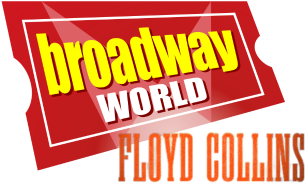Review: BROKEN LOVE at San Francisco Ballet
The program of two contrasting ballets runs through April 18th
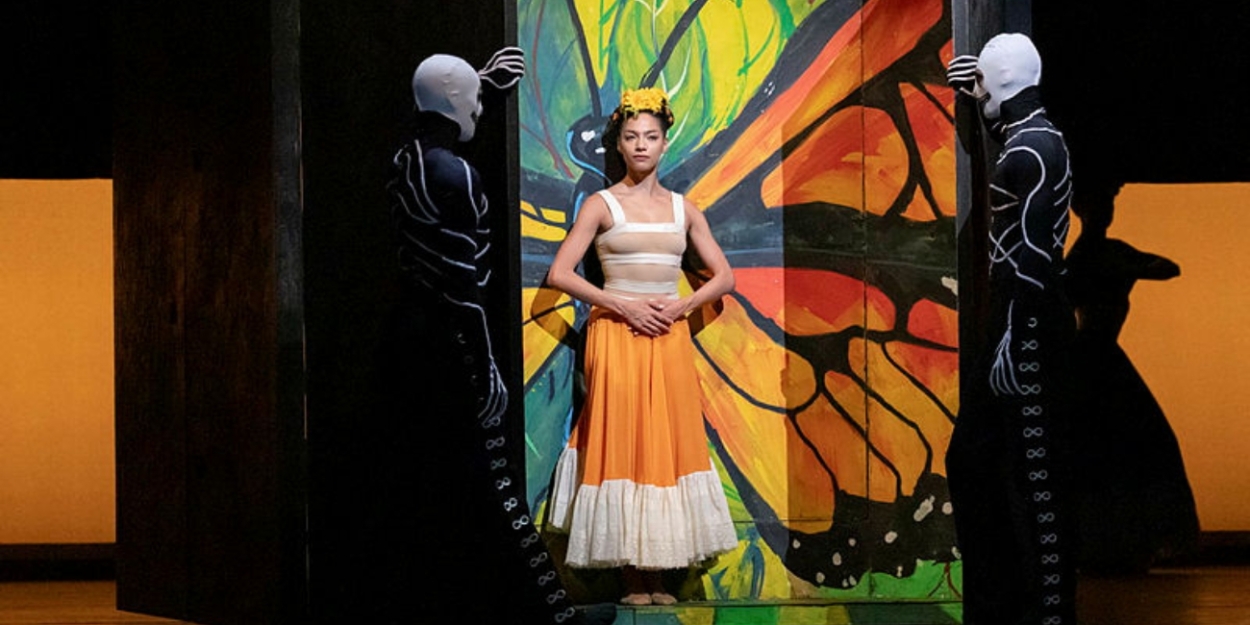
San Francisco Ballet’s Broken Love is such a curiously conceived, almost schizophrenic double bill that your enjoyment of it may ultimately come down to whether you’re a glass half full or glass half empty kind of person. The pair of one acts that comprises it are both narrative ballets about women who fall in love and come to early deaths, but they could not be more different in terms of temperament, style and artistic merit, not to mention sheer entertainment value.
First the good news. Annabelle Lopez Ochoa’s Broken Wings has returned after its smashing SFB premiere last year, and proves itself to be the kind of ballet worthy of repeated viewings. The 50-minute fantasia on the life and creative inspirations of artist Frida Kahlo is an almost consistent delight from start to finish. It’s not so much the choreography that enchants here as it is how Kahlo’s artwork and legacy seem to have sparked Lopez Ochoa’s imagination to create stage pictures that are vibrant, strange and alluring, unlike any I’ve seen on a ballet stage.
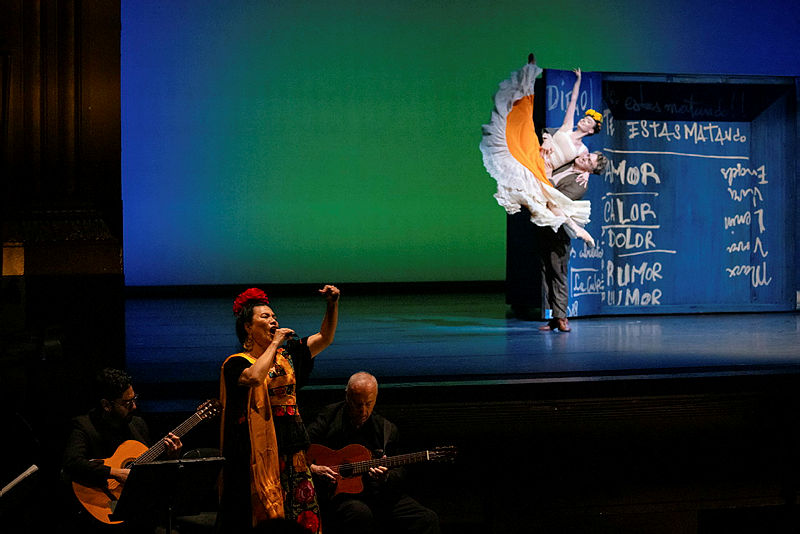
production of Annabelle Lopez Ochoa's Broken Wings
The original score by Peter Salem is also enormously effective, as haunting and varied as the onstage imagery. In a welcome addition, the well-known Mexican singer Geo Meneses performs the folk song “La Llorona” live from the side of the stage. Her dusky contralto and earthy phrasing serve to help ground the ballet in place and culture.
There are specific episodes from Kahlo’s life (a schoolgirl crush, her tragic accident, the fateful first meeting with Diego Rivera, etc.), but those tend to be the less interesting sequences of the ballet. Where it really comes alive is in the fanciful presentation of iconography that will be familiar to anyone well acquainted with Kahlo’s paintings. So we get a chimerical deer, a trio of anthropomorphic birds and an enigmatic band of skeletons that also serves as a Greek chorus.
Best of all, we get ten male Fridas who beguile from their very first entrance as they seem to float across the surface of the stage. Even as they often move in unison, each one reads as a distinctively different self-portrait of Kahlo, and each is costumed in a different color with a unique headdress. There is a delicious complexity in the way they use their muscular arms and torsos to flirtatiously manipulate their flouncy skirts in hyper-feminine fashion.
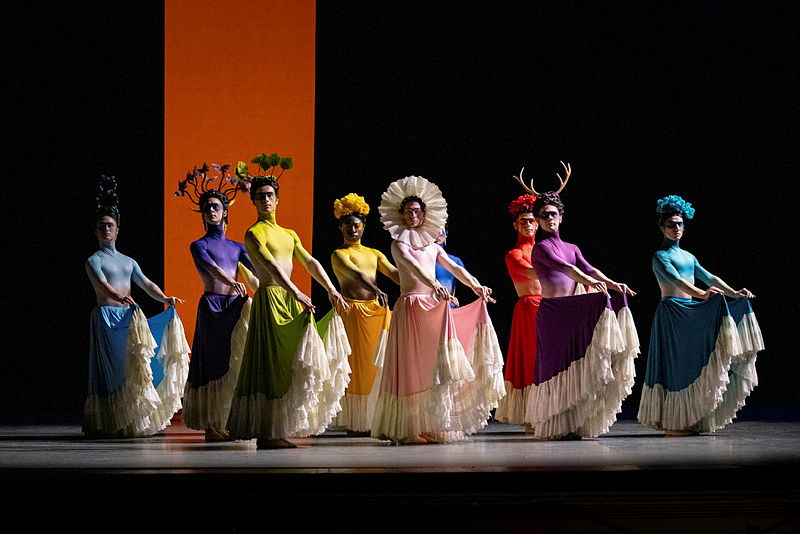
Lleyton Ho, Luca Ferrò, Simone Pompignoli & Victor Prigent in Broken Wings at San Francisco Ballet
They are a perfect distillation of the androgyny so often present in Kahlo’s artwork. These ten men are haunting, gorgeous, tender, fierce, vulnerable, arresting and altogether fabulous, made all the more so by their absence of overt camp. Whenever they’re onstage, the energy and intrigue kicks up a notch. Oh, how I’d love to see Lopez Ochoa make an entire ballet focused solely on them.
That statement is not in any way meant to slight the marvelous Isabella Devivo who dances the central role of Frida. DeVivo debuted in the part last year and has only grown in her interpretation, still retaining her girlish winsomeness at the beginning yet more fully able to command the stage as Frida matures. Myles Thatcher as Rivera effectively captures the heft of the character, but it’s not his fault that Lopez Ochoa hasn’t come up with a distinctive way to stylize the movement for that role. Cavan Conley is delightful in a brief proto-Gene Kelly solo, and Sasha Mukhamedov does what she can to fill in the gaps of her underchoreographed role as Frida’s sister and sometimes rival for Diego’s affections. Even with those reservations, there is still the panoply of Fridas to captivate the audience. They make the ballet such fascinating fun that I could happily watch it again and again.
If only that were also true of the piece that completes the program, Frederick Ashton’s Marguerite and Armand. Having now seen it three times and really giving it my best effort to glean what I can from the piece, I have to admit that I just don’t get it. Why did SFB deem this turgid work worth doing in the first place, let alone bring it back for an encore presentation this season?
The ballet is certainly of historical significance as it was made in 1963 to capitalize on the Royal Ballet’s new dream team of the young, recently defected Rudolf Nureyev and the doyenne of British ballet, Margot Fonteyn. I have no doubt it was quite something to see them dance the piece back in the day, but stripped of their extravagantly outsized stage presence, the ballet is very weak tea, mainly a lot of promenading and overheated embraces before the heroine meets her tragic end.
It’s the same “courtesan falls in love with man she’s forced to give up then she dies of consumption” tale familiar from so many other, better works, including Verdi’s La Traviata. But here it’s relayed in a mere 35 minutes so characters and story aren’t developed sufficiently to invest us emotionally. It’s sort of like watching a Cliff Notes version that includes the major plot points but drains them of color.
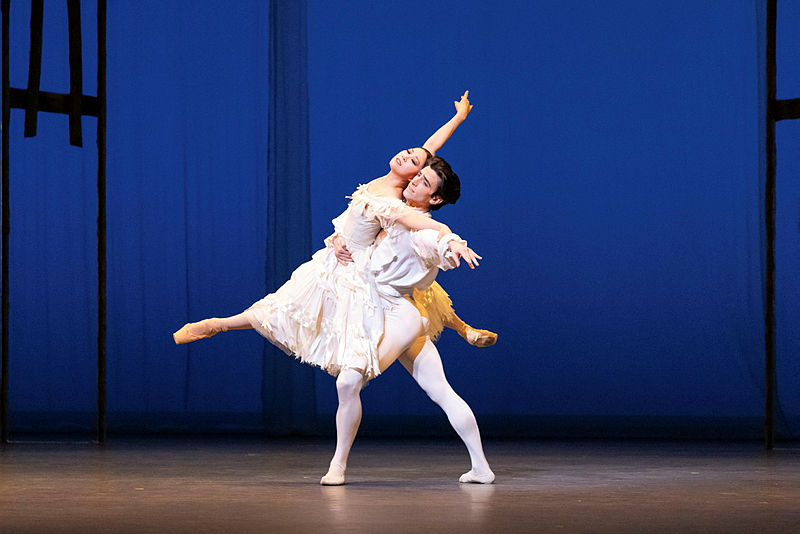
at San Francisco Ballet
At the same time, it also feels oddly attenuated as the ballet is set to a glorious Liszt sonata that includes more bars of music than Ashton knew what to do with. He uses some of the most beautiful and vivacious solo piano passages merely to underscore characters tromping on and offstage or to cover scene changes (which are too many and too fussy for such a short ballet).
I can see why superb dancers like Misa Kuranaga and Joseph Walsh would want to have a go at roles with such famous provenance, but not being larger-than-life personalities themselves (no offense) there’s virtually nothing that they can do to bring this moribund ballet alive. The one shining moment in the performance was a series of lateral lifts early on in the proceedings that were light and luscious and brilliantly executed by the pair, but alas, a few spectacular lifts do not a ballet make. Enough said.
As I woke up this morning replaying the program in my mind, it was the bevy of Fridas who were still reverberating in my imagination after haunting my dreams, and that’s not such a bad thing. Maybe I’m a glass half full kind of guy after all.
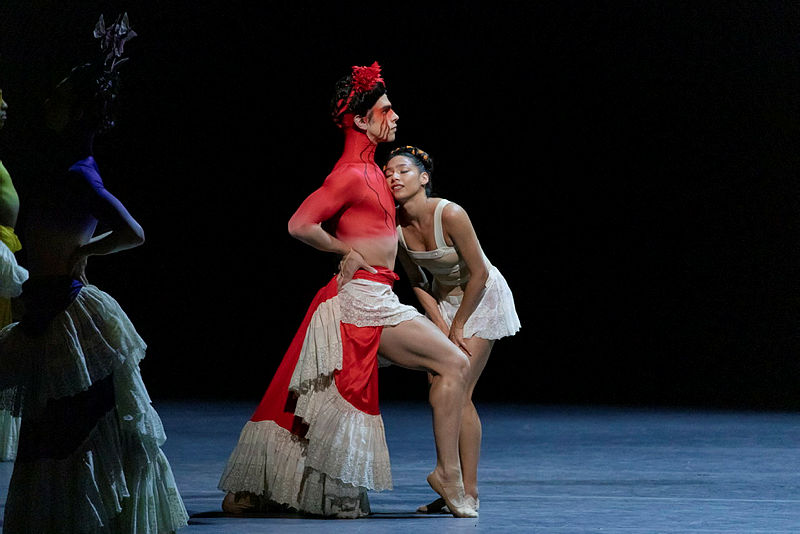
in Annabelle Lopez Ochoa's Broken Wings at San Francisco Ballet
(photos by Reneff-Olson Productions)
---
Performances of San Francisco Ballet’s Broken Love program continue through Friday, April 18th at the War Memorial Opera House, 301 Van Ness Avenue, San Francisco, CA. Running time is approximately one hour fifty minutes, including one intermission. For tickets and additional information, visit www.sfballet.org or call (415) 865-2000, M-F 10am-4pm.
Reader Reviews
Videos
